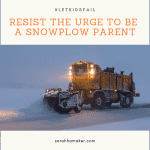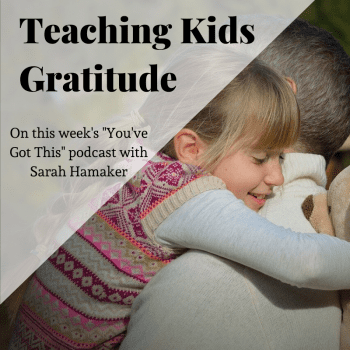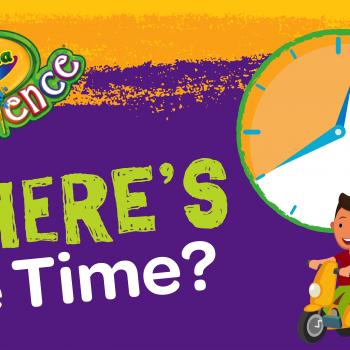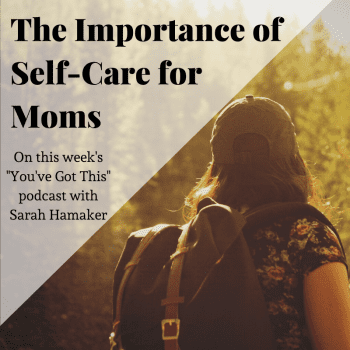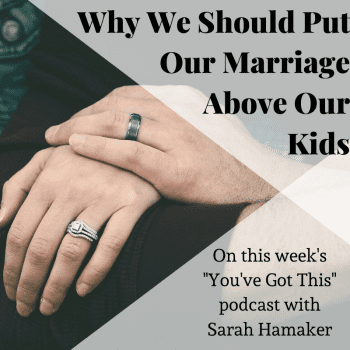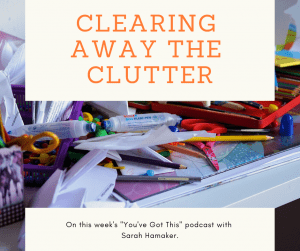
The following is an excerpt from my interview with Darla DeMorrow on my podcast, You’ve Got This.
Certified Professional Organizer Darla DeMorrow of HeartWork Organizing helps people find peace through organizing and design. Her five-step system helps people to stop clutter before it starts, save money and simplify their life. Her organizing books Organizing Your Home with SORT and Succeed and Organizing Your Kitchen with SORT and Succeed outlines her SORT and succeed methods of decluttering.
Kids and clutter seem to go hand in hand. I have four children, who share rooms, and sometimes they have a lot of stuff in their room. I’ve noticed this with kids that it can be difficult with them t figure out how to maintain their treasures and keep their room livable. How do you help parents and kids think through clutter and organization as a whole.
Darla: The more you can model for your kids how to be organized, the better they’re going to be at it. That means, the more you have your act together, the less clutter your kids see around the house, they’re going to internalize some of that. That doesn’t mean they’ll have that natural proclivity, even if they are organized naturally, that they’re going to do it all the time—that’s just being human. Sometimes, our kids’ version of organized isn’t ours.
The second part is how do you help your kids get back to a certain place of a clean room, for example. My standards are pretty clear when it comes to their room: nothing on the floor except for furniture, clothes hung or in dressers, and nothing under the bed. It’s three things and really clear. It’s not vague, which is what happens when you say to a kid, “Go and clean your room.” There’s a lot decision-making to make to get to nothing on the floor, clothes put away and nothing under the bed.
We need to train our children on how to clean. I would tell my kid when they were little to pick up all the blocks, then come get me. We’d move through their toys that way because they can get so overwhelmed so easily.
Darla: The magic is partially in breaking it down into smaller chunks so they can handle an age-appropriate request. As a professional organizer, we spend five days a week in client’s homes, what we see over and over and over again, is that parents haven’t defined where things go. So if you tell them to put things away, the kids don’t know where things go. If you’re feeling overwhelmed as an adult, and you feel you can’t get your space organized, you probably need some help from a professional organizer. It’s hard to get kids put things away if away is already chockful and not defined.
I also think on that, there’s been a lot of talk on downsizing our things. There can be too many toys available to our children at one time.
Darla: Kids are often transitioning from one developmental phrase to another, and in our culture, our kids are always bringing home some little prize they won or birthday parties. Toy rotation and seasonal toys can make a difference. Toy boxes as toy storage are the worse container because kids dump everything out to get that one thing that filtered to the bottom. I have parents ask “What container can your kid manage on their own?” A toddler can manage a small bin a foot square with handles, for example. Something your kid can pick up, dump up and pick up all on their own is ideal.
The trick is to use those containers as a guide. What we tend to do as parents is say “I’ll go through the toys later,” and we shove things into the cubes. But once it’s full, just as we take the trash out when the trashcan is full, we need to remove some of the toys when the bin is full, either in storage to rotate them, pass them down, or donate them. There is no shortage of toys coming in the house, so you’ve got to make that transition to things coming in and things going out. I recommend thinking about what you’re bringing in to your house when you’re at the store with a cart full of things. You’ll be bringing it out on trash day, a month from now when things are broken, it might be six months from now when kids are growing out of those clothes, or it might be six years from now when you finally get around to decluttering the baby toys. But at some point, that bag you brought in from the store it has to leave your house. If you have that realization up front, it will start to change your buying behavior, and your gifting behavior.
Stuff can wear us down. How can we strike a balance between having what we need and not being stressed with taking care of too much stuff?
Darla: From a parenting perspective, a lot of us go into guilt mode. There’s no judging, no guilt in Sort and Succeed. It’s five simple steps to organize and not one of them are judging and guilt. But what is helpful is to understand that we are made by God to do things like economize and hold onto things. What’s not helpful is to stay in sort of caveman mood in 2019 when you’re house is bursting at the seams. It’s a different situation to live five minutes from target to get what you need. We don’t need to horde things like we used to. There is very little that we can get at almost a moment’s notice. None of us have grown up learning how to part with things. It’s not a problem that our grandparents had to tackle. We weren’t taught as parents to rotate things in and out, nothing in our education on how to part with things. It’s a learning process, because we’re living in a hyper, hyper consumerism environment. You can learn how to organize, how to make better decisions at the store so you’re not constantly bringing in too much stuff, and you have to constantly declutter. It’s time consuming and it’s energy consuming.
To hear more great advice and stories from Darla, listen to “Clearing Away the Clutter” on the “You’ve Got This” podcast.
Visit Sarah online at sarahhamaker.com for more tips on raising kids.



